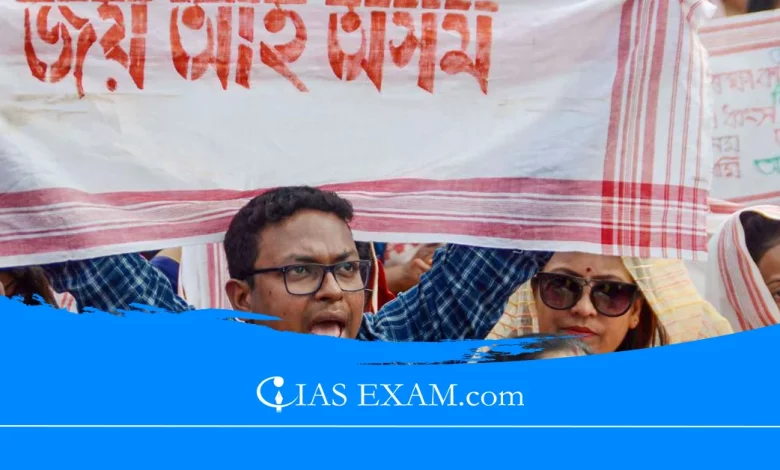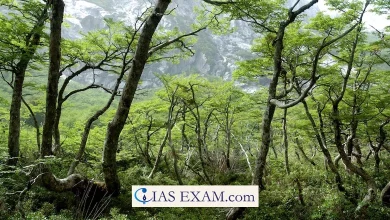Anti-CAA Protests Concentrated in Assam, Tripura
Syllabus: Polity[GS Paper-2]

Context
The Citizenship (Amendment) Act, which caused protests in the Northeast in 2019, is now facing opposition in Assam and Tripura due to new rules being implemented.
Details on News
- The Citizenship Amendment Act (CAA), passed by the Indian Parliament in December 2019, sparked a series of protests across India.
- In the Northeastern states of Assam and Tripura, these protests have been particularly intense due to unique regional concerns.
Inner Line system
- The ILP system is in operation in four North Eastern Indian states viz. Arunachal Pradesh, Nagaland, Mizoram, and Manipur.
- This system compels home folks from other parts of India to obtain a special form of permit in order to introduce and dwell in these states.
- The ILP was first begun to be practised by the British in 1873 in order to pass the history of the regional community and even after India was declared to be independent, the ILP has not stopped to be enforced.
What are the reasons behind the opposition of Assam and Tripura to CAA?
- The consanguinity of only Mizoram, Nagaland, and Meghalaya (among the other states) to the Sixth Schedule or the ILP regime, and their proximity to Bangladesh have brought about enmity against the CAA in these areas.
- The mindset of the people against immigrants/migrants on the borders of two states in association with Bangladesh is strong because both the states have had to face a large influx of refugees from the neighbouring country and were forced to host them on their territories.
- These migrants, often both large groups and individuals, have caused apprehensions especially among Assamese ethno-nationalists who at times are accompanied by some Tripuri tribes.
- The recently passed Citizenship Amendment Act (CAA) being discriminatory against Muslim refugees is yet another case in this point as well, since CAA would give legitimacy to Hindu refugees and to Bengali-speakers, which causes a threat among the Bengali-speaking population in these states.
- Assam and Tripura people lament that apparently the government’s purpose of the Citizenship Amendment Act (CAA) and the National Register of Citizens (NRC) is to protect the Citizenship Act’s (CAA) original ideological purpose of the NRC, but it has been stalled in Assam.
Concerns
- The Citizenship Amendment Act (CAA) in Assam and Tripura has sparked protests and tensions among residents, causing concerns about the potential increase in immigrants and potential harm to the cultural and linguistic heritage of native communities.
- The Act is seen as a breach of the Assam Accord of 1985, causing feelings of betrayal among the Assamese.
- The protests have caused political instability and unrest, affecting the government’s operations. Economic disruptions have occurred, impacting trade, transportation, and daily business activities.
- Human rights concerns have arisen due to authorities’ use of force, internet shutdowns, and other restrictive measures.
- The instability in these border states is a significant concern for national security, and the negative reactions from other countries could impact India’s diplomatic ties.
- The refusal of Northeast state governments to enforce the CAA is seen as a threat to India’s federal system, encouraging other states to disobey national laws.
- The Act has raised concerns about its adherence to the constitution, particularly regarding secularism and equal treatment under the law.
Conclusion
The protests in Assam and Tripura represent a complex interplay of ethnic, cultural, and political dynamics. The resolution of this issue requires a sensitive approach that addresses the unique fears and aspirations of the Northeastern states while aligning with the broader framework of the Indian Constitution.
Source: The Indian Express
UPSC Mains Practice Question
Q.Analyse the socio-political factors that have led to the concentration of anti-CAA protests in the states of Assam and Tripura. Discuss the implications of these protests on the federal structure and communal harmony in India.





.png)



